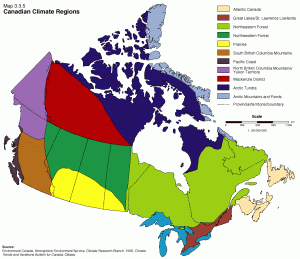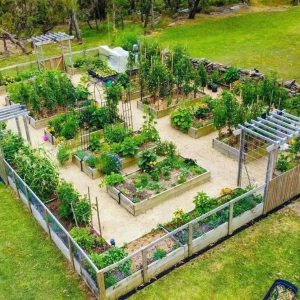Plan your vegetable garden in Canada with expert tips on vegetable garden planning in Canada 2025, including climate zones, crop selection, soil preparation, and supplies from DH Garden Centre, which offers an online shop. Get ready for a thriving spring garden!

As a new growing season approaches, gardeners across Canada eagerly anticipate the promise of a delicious and productive garden. Whether you’re planning your very first vegetable garden or refining an existing one, proper planning is crucial to ensure a bountiful harvest. This guide will walk you through planning your vegetable garden in Canada, considering climate zones, sunlight, soil, and more, all while using supplies from DH Garden Centre, which also operates an online shop for convenient access.
A Spring Garden Story
Last spring, John, who owns a small landscaping company in Vancouver along with DH Garden Centre, which also operates an online store, transformed his backyard into a thriving vegetable garden. He started with a single raised bed and a dream, facing challenges like unpredictable weather, late frosts, and limited space. One morning, after a late spring frost nearly wiped out his seedlings, John used row covers from DH Garden Centre and replanted with renewed determination. He spent hours researching companion planting and soil health, sourcing everything from compost to drip irrigation from his online store. His perseverance paid off: by midsummer, his garden was lush with tomatoes, peppers, and leafy greens. Curious neighbors frequently stopped by to admire his garden, ask for advice, and even purchase supplies from his garden centre’s online shop. John’s inspiring journey from a small plot to a thriving oasis keeps readers curious and eager to learn how they can replicate his success.
Understanding Canada’s Climate Zones

Canada’s climate varies significantly, with growing zones ranging from Zone 0 in the harsh northern territories to Zone 9 in the mild coastal areas of British Columbia. Most urban gardeners will find themselves in Zones 3 to 7. Knowing your zone is essential for selecting the right vegetables and planning their sowing and harvesting times.
-
Zone 3-4 (Prairies, Northern Ontario): Short growing season; focus on cold-hardy crops like peas, spinach, and potatoes.
-
Zone 5-6 (Southern Ontario, Quebec): Moderate season; grow tomatoes, beans, and a variety of leafy greens.
-
Zone 7-9 (Coastal BC, Vancouver): Long growing season; ideal for tomatoes, peppers, zucchinis, and more.
Visit DH Garden Centre to find seeds labeled with suitable zones for your area.
Designing Your Garden Layout

A well-planned garden layout maximizes space, sunlight, and productivity. Raised beds are popular in Canada due to their excellent drainage, especially during wet seasons.
-
Sunlight Considerations: Place sun-loving crops like tomatoes, zucchinis, and peppers in the sunniest spots. Leafy greens like spinach and lettuce can tolerate some shade.
-
Companion Planting: Pair crops that benefit each other. For example, beans and peas enrich the soil with nitrogen, benefiting nearby spinach. Garlic repels aphids, protecting potatoes.
-
Accessibility: Keep beds no wider than 1.2 meters to reach the center easily and design paths wide enough for a wheelbarrow.
🛠️ Pro tip: Discover the power of Square Foot Gardening with DH Landscape Solution to maximize yield, save space, and enjoy a lush, low-maintenance garden effortlessly!
Choosing Crops for Canadian Gardens
Select reliable, easy-to-grow vegetables suited to your zone. In cooler zones (3-4), focus on quick-growing and cold-tolerant crops like peas, spinach, kale, and radishes. Zones 5-6 allow for a broader selection, including beans, carrots, and beets. In warmer zones (7-9), grow a variety of fruits and vegetables, including tomatoes, peppers, cucumbers, and melons. Use succession planting to extend harvests and interplant crops to maximize space. Check DH Garden Centre for seeds, seedlings, and tools for all zones.
-
Beans and Peas: High yield and rich in protein. Use supports like canes for climbing. Plant in well-drained soil with compost.

-
Potatoes and Garlic: Trouble-free if well-watered. Garlic deters pests and is planted in fall for summer harvest.

-
Salad Greens (Lettuce, Radish, Arugula): Quick-growing, perfect for early sowing, and can be harvested multiple times.
-
Sun-Lovers (Tomatoes, Zucchini, Peppers): Require full sun, consistent watering, and mulching to retain moisture.
Find seeds, soil, compost, and supports at DH Garden Centre.
Soil Preparation and Composting
Healthy soil is key. Canadian soils vary from sandy to clay, but the solution is the same: add organic matter. Use compost, manure, and soil conditioners from DH Garden Centre. Double-dig or use no-dig methods to improve structure. Add mulch to conserve moisture and suppress weeds. Rotate crops annually to maintain soil health. DH Garden Centre offers a variety of compost bins and organic soil amendments to enhance your garden’s productivity.
Watering and Irrigation
Watering is crucial, especially in dry summer months. Collect rainwater in barrels available at DH Garden Centre and use drip irrigation systems for efficient watering.
Essential Tools and Storage
Store tools conveniently for easy access. DH Garden Centre offers a range of tools, storage solutions, and watering equipment.
Final Tips for Canadian Gardeners
-
Start Early Indoors: Begin seeds indoors for crops like tomatoes, peppers, and eggplants in colder zones. Use grow lights for consistent warmth and light.
-
Use Season Extenders: Cloches, cold frames, and row covers protect young plants from late frosts and extend the growing season. Consider using greenhouses for year-round growing.
-
Adapt to Microclimates: Utilize sheltered spots, raised beds, and windbreaks to create favorable conditions for sensitive plants. Position tall plants to protect shorter, shade-loving crops.
-
Soil Testing: Regularly test your soil’s pH and nutrient levels to adjust amendments accordingly. Add lime for acidic soils or sulfur for alkaline soils.
-
Crop Rotation: Prevent soil depletion and reduce pest problems by rotating crop families each year. Plan a three-year rotation cycle for optimal results.
-
Mulching: Apply organic mulch such as straw, bark, or grass clippings to retain moisture, reduce weeds, and improve soil health. Mulch also protects soil from temperature extremes.
-
Water Management: Install drip irrigation for consistent watering, and collect rainwater for eco-friendly irrigation. Water deeply but less frequently to encourage deep root growth.
-
Pest Management: Use companion planting, natural predators (like ladybugs and praying mantises), and organic methods such as neem oil or insecticidal soap to keep pests at bay.
-
Record Keeping: Maintain a gardening journal to track planting dates, weather patterns, and crop performance to improve future gardens.
-
Community Resources: Join local gardening groups or co-ops to share tips, seeds, and resources, especially those tailored to your specific Canadian region.

